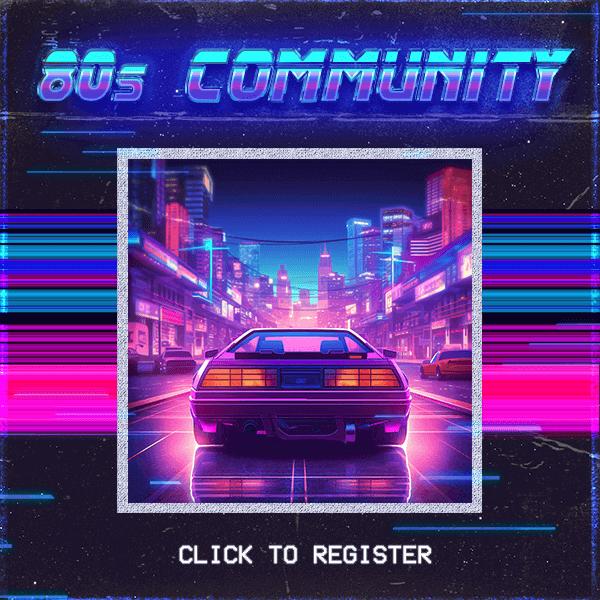Before digital downloads, streaming apps, or even compact discs, the cassette tape ruled the airwaves, bedrooms, and glove compartments of the 1980s. It was more than just a music format. The cassette became a cultural phenomenon that changed how we listened, shared, and interacted with music. Whether it was the mixtape you gave your crush, the tape you wore out from repeated play, or the Walkman that went everywhere with you, cassettes were personal, portable, and powerful. This article takes a deep look at how the cassette tape defined the 1980s and permanently altered the music experience. From boom boxes to blank tapes, recording off the radio to bootleg concert copies, it was a decade where analog ruled with style.
The Rise of the Compact Cassette
Although cassette tapes were introduced in the 1960s by Philips, they did not become a household staple until the late 1970s and early 1980s. By then, tape technology had matured. Audio quality had improved, high bias tapes were widely available, and home stereo systems with dual cassette decks made recording easy and accessible. For the first time, people could create personal copies of their favorite albums, dub music from the radio, or record voice messages. This level of control over content was revolutionary. No longer were listeners limited to vinyl or what the radio decided to play. Cassette tapes gave power to the listener.
The Sony Walkman and the Birth of Portable Music
The launch of the Sony Walkman in 1979 was a game changer. Suddenly, music could go anywhere. Jogging in the park, riding the bus, lying in bed late at night, music became a truly personal experience. In the 1980s, the Walkman became a symbol of youth freedom and cool. Countless brands followed with their own versions, but the name Walkman became synonymous with portable cassette players. Teens clipped them to their belts, carried them in backpacks, and wore the signature orange foam headphones like a badge of honor. The Walkman was not just about music. It was about identity.
The Boom Box Era
While the Walkman gave us private listening, the boom box blasted sound for everyone. Whether it was carried on shoulders down city streets or pumping from the back of a locker room, the boom box defined public listening culture in the 1980s. With dual cassette decks, radio tuners, EQ sliders, and deep bass speakers, boom boxes became performance machines. They were popular in urban neighborhoods, breakdancing crews, and beach parties. They were used to record homemade tapes, host impromptu dance sessions, and make statements about taste and style. Carrying a boom box was a display of pride and personality. Bigger usually meant better. Some even had flashing lights or detachable speakers.
The Mixtape Culture
Nowhere was the influence of cassette culture more personal than the creation of the mixtape. Long before digital playlists, crafting a mixtape was a ritual. Songs were carefully chosen, ordered with intention, and often introduced with voice messages or sound effects.
Mixtapes served many roles in the 1980s:
- A love letter in musical form
- A party gift or car ride soundtrack
- A way to show off your music taste
- A study companion or sleep aid
Recording songs from the radio required patience and timing. You had to press record at the perfect moment to avoid the DJ's intro or commercial fade out. Some tapes had cut off songs or radio chatter at the end, which only added to their charm. Blank tapes from brands like TDK, Maxell, Memorex, and BASF filled drawers and shoeboxes across the country. Everyone had their preferred tape brand and length. Some preferred the 60 minute tapes for quality, others the 90 minute tapes for longer mixes.
Recording Off the Radio
Radio was a primary source of music discovery during the 1980s. Whether it was Casey Kasem's countdown, the weekly top ten, or a late night dedication show, taping songs off the radio was a shared experience for millions of teens. You might wait by the stereo for hours, ready to pounce on the record button when your favorite song came on. Some listeners even learned to time commercials and news breaks to conserve space on the tape. It was a practice that blended patience, timing, and passion. Many young people created personal radio shows with their own commentary between songs. The home stereo system became a private studio. In bedrooms and basements across America, a generation learned basic audio editing without realizing it.
Car Culture and Cassettes
Cassette players in cars became standard during the early 1980s, replacing eight track decks as the go to in vehicle audio system. Tapes gave drivers and passengers the freedom to bring their entire music collection on the road. The road trip cassette collection became a staple of glove compartments and center consoles. Everyone had that one worn out tape that lived in the deck. The hiss of the tape and the clunk of the auto reverse became comforting background sounds. Car stereo stores exploded in popularity, selling upgraded decks with high end sound systems, graphic equalizers, and digital tuners. Tapes with custom labels slid into slots labeled by artist or mood.
Album Releases on Cassette
While vinyl still held strong in the early 1980s, the cassette eventually outsold both vinyl and compact discs by the late part of the decade. Record labels began releasing every album in all three formats, with the cassette often being the more affordable and practical option. Record stores featured large cassette walls filled with clear plastic cases in flip racks. Album artwork was scaled down to fit the J card inserts, which sometimes included foldout lyrics or additional liner notes. For many, the cassette version was the first and only version they owned. Exclusive cassette singles known as cassingles became popular too. Often sold for just a dollar or two, they included one or two tracks and sometimes a bonus remix or instrumental.
Tape Maintenance and Challenges
Cassette tapes were far from perfect. They had limitations and quirks that became part of the listening ritual.
- Tape hiss: The background noise that came with analog recording
- Winding with a pencil: A common fix for loose or tangled tape
- Tape warping: Caused by heat, magnets, or time
- Eaten tapes: The dreaded moment when your player chewed up your favorite mix
Listeners kept tape head cleaners, demagnetizers, and cassette cases to prolong the life of their collection. But despite the drawbacks, most fans found the format worth the effort.











